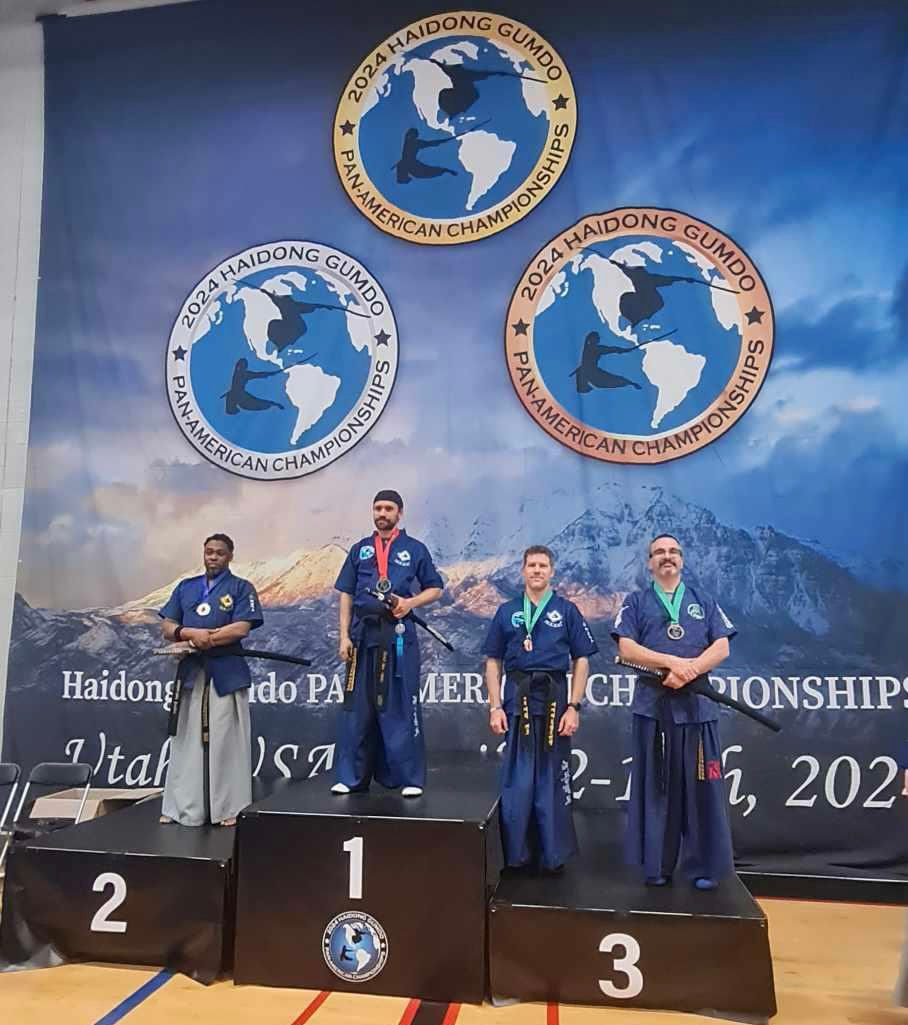Different philosophies in sword sparring equipment
- jacobsjf
- Nov 18, 2022
- 2 min read
As a sword martial art, Haidong Gumdo faces a distinct problem of applicability. When swords are drawn, people die. Thus, as modern practitioners, we are inhibited in our ability to fully realize what we practice. Or are we...?
Various arts have different approaches to this dilemma. Kendo, for example, (or Kumdo) has been developing as a martial sport for over a century. Practitioners wear protective armor and use swords made of bamboo staves, known as shinai in Japanese, or jukto in Korean. Shinai are a far safer training implement than bokken or mokgum.
Safety swords used by the World Haidong Gumdo Federation follow a similar philosophy, essentially padding the sword to reduce the risk of injury. Such an approach can be seen outside of the martial arts in live action role playing (or LARP) groups such as Dagorhir or Darkon. Participants in these groups construct their own padded swords, or boffers.
On the other side of the spectrum, historical European martial arts (or HEMA) groups tend to prefer greater realism. These groups might use unsharpened steel swords or synthetic replicas with varying degrees of flexibility for safely sparring with a partner. The Society for Creative Anachronism (or SCA) uses these types of weapons in their “Cut and Thrust” combat system.
In regards to more historical sparring implements, the fukuro shinai dates back to the 1500’s, and is a sword used in Yagyu Shinkage Ryu Kenjutsu. It offers greater flexibility and cutting feedback not unlike the modern sparring brand Actionflex, which bends and flexes upon impact to allow combatants to “cut through” their opponents similar to what might occur with a well executed cut using a sharpened steel sword. These types of swords are used regularly in the Japanese sword arts of Goshindo and Chanbara.
There are several different philosophies at play with all of this equipment. As we want to avoid injury to our training partners, is it better to clad ourselves in armor, or to pad the sword? Is it better to have a rigid sword in order to be able to execute blocks? With a real sword, “blocking” a cut with the edge of the blade is likely to lead to chips, dents, or even breakage. So deflection, evasion, and counter attacks are preferred. Perhaps a sword that incentivizes this type of combat holds merit.
Ultimately, as modern practitioners, we must approach our training from multiple angles, and so sparring with multiple types of equipment is ultimately advantageous to developing the sense of distance and timing that are integral to high level swordsmanship.

Pictured above are different types of sparring swords. From top to bottom, they include a historical fencing foil, a theatrical stage combat katana (note the dents along the edge of the blade), a shinai, and an Actionflex Kuro Obi sword.



Comments